An army marches on its stomach: military rations across the Alliance
)
How do NATO Allies feed their militaries during operations and exercises that often take them through extreme climates, from snowy mountains to scorching deserts? The right military rations ensure that troops have enough strength and endurance to fulfil all the challenging tasks required – and the best rations remind them of their homelands, serving up some of their favourite meals while they are deployed thousands of miles away from home. Read on to discover the diverse culinary world of NATO military rations!
What is a military ration?
Military rations, called MREs (Meals, Ready-to-Eat) in some countries, ORPs (Operational Ration Packs) or ‘one-person meals’ in others, are provisions supplied to soldiers in the field when they do not have regular access to food. Designed to provide much-needed nutrition and sustenance, the rations of each NATO country may differ in flavour, but they do share some similarities. Because soldiers have to carry their rations along with their other equipment, the packages are usually as lightweight and compact as possible, and are made of durable materials that can withstand challenging conditions. They have a long shelf life and can be adapted for different climates and temperatures to avoid spoiling.
NATO has developed its own standards and recommendations for rations, which are summarised in the NATO Standardization Agreement (STANAG) 2937. Troops should be able to prepare the rations simply, without additional tools, and should be able to eat them either hot or cold. Different tasks also require different calorie intakes. For regular missions such as peacekeeping, firefighting or construction work, the STANAG recommends 3,600 calories a day, whereas for combat operations or Special Forces missions, the recommendation increases to 4,900 calories.
Although military rations are not generally considered a gourmet experience, the STANAG suggests that they should provide varying and diverse menus to help avoid food fatigue during long deployments and to cater to different cultural and religious needs. Current rations usually have at least one vegetarian option, and several Allied militaries provide halal, kosher and Sikh/Hindu menus to accommodate their troops’ dietary preferences.
What's cooking? A peek at Allied military rations
So what exactly can you find in the ration kits of different Allied troops when they are deployed or on exercises? Have a look at some examples of national military rations from different NATO countries to see what they have in common and how they differ. Can you spot some traditional national dishes?
Czechia
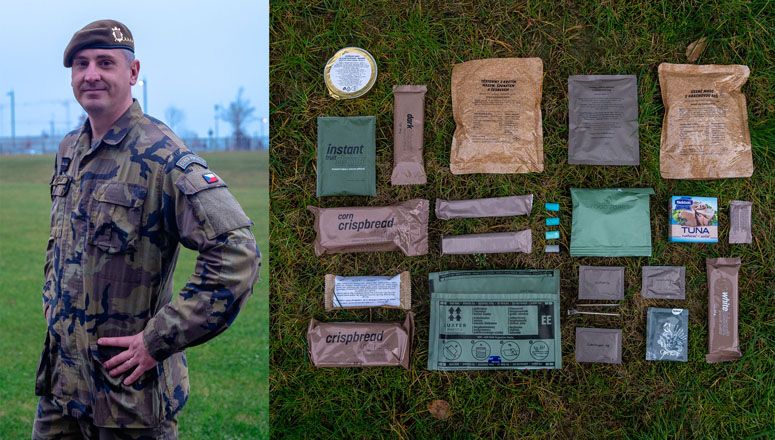
The Czech 24-hour ration pack consists of three meals: breakfast, lunch and dinner, and may also have a supplement pack with additional meals. Breakfast includes crispy corn crackers, pork meat in its juice, biscuits, chocolate, and an instant drink, plus coffee or tea. For lunch, Czech troops are supplied with a hot dish like pasta with turkey, spinach and garlic, vegetable mix salad, a dessert, chocolate, and instant drinks. Dinner might be smoked meat with pea porridge, instant soup, crackers, biscuits, and an isotonic drink.
Estonia
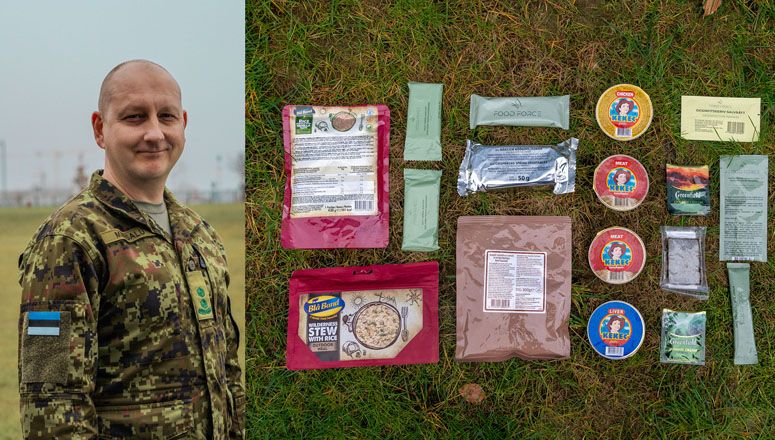
The Estonian 24-hour military ration pack, such as the one pictured above , comes with vanilla rice pudding, biscuits, pork spread and banana chips for breakfast and may include pasta carbonara, chicken pate or crispbread for lunch. The Estonian MRE also offers gluten-free dishes, for example, wilderness stew with beef and liver pâté. For the quick but nutritious snack on the go, it also contains an orange-almond bar, banana chips and salted nuts. Troops can drink coffee with caramel flavour, green tea and a raspberry energy drink for an energy boost.
Germany
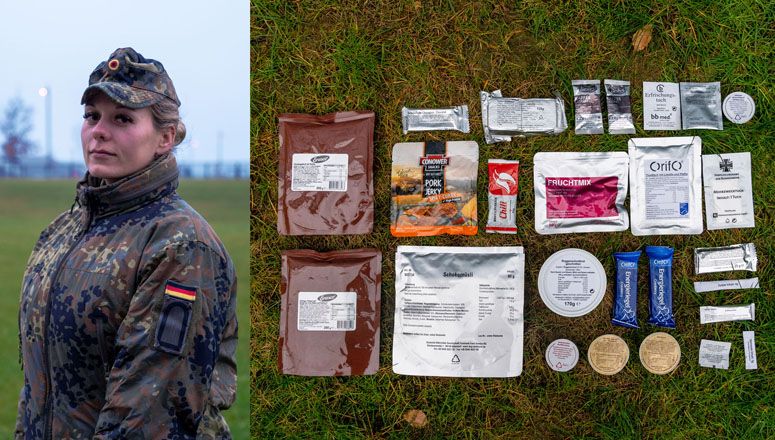
A typical German 24-hour ration pack contains two main courses, three snacks, muesli, a dessert and nine drinks. The two main courses can be eaten hot or cold. Examples include pork goulash with pasta or a stew casserole with black beans and cocktail sausages. Carbohydrate-rich snacks include cranberry energy bars, pork jerky or dried fruit mix. Rations include rye bread with a spread, such as beef pâté, tuna spread, cherry jam and a dessert in the form of chocolate or chocolate cookies. Troops also have nine different types of drinks available, including instant coffee, tea or instant bouillon.
Greece
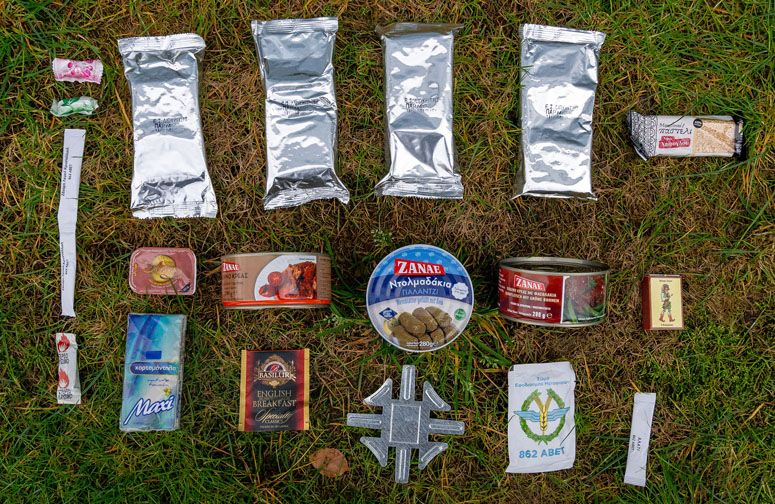
The Greek 24-hour ration pack has several variants. For breakfast, troops get crackers, honey or a sesame bar. For lunch and dinner, the ration includes several dishes – pork meat in tomato sauce, beef with beans and traditional stuffed grape leaves, accompanied by black tea.
The Netherlands
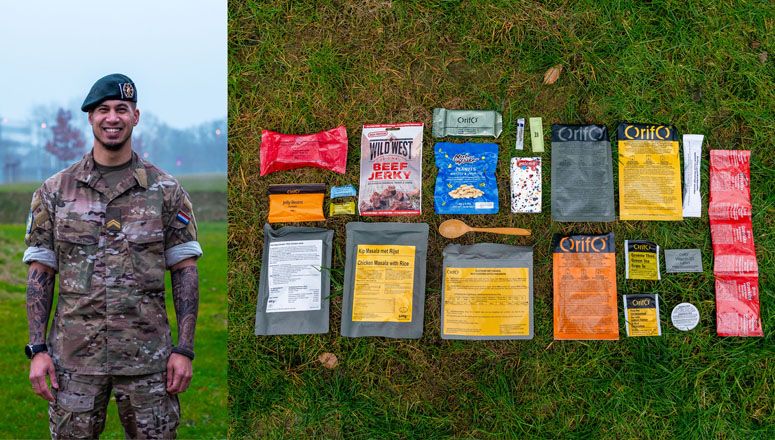
The Dutch 24-hour military ration pack comes in several variants, such as halal, kosher or vegetarian. The basic pack includes meal modules, which can be rice pudding with cinnamon and muesli popcorn for breakfast and chicken masala with rice or hot chicken for lunch and dinner. For quick fuel, there are snacks like peanuts, biscuits, beef jerky, chocolate bars, hot chocolate or protein drinks.
Recipe: make your own Dutch 'battle cake'!
Do you want to eat like a Dutch soldier on deployment? Below, you can find a recipe for a quick 'battle cake', which is included in the Dutch MRE – and you probably already have the ingredients in your pantry! Eet smakelijk!
- Crumble biscuits or an oatmeal/muesli bar.
- Add one or more of the following products: chocolate powder or coffee powder or sugar.
- Add water to the mix until you create a cohesive (but not too moist) dough ball.
- Bake the dough like a pancake, in either one piece or several small ones.
- Garnish the cake with jam, hazelnut paste, peanut butter or syrup. You can also add peanuts or leftover fruit.
Poland
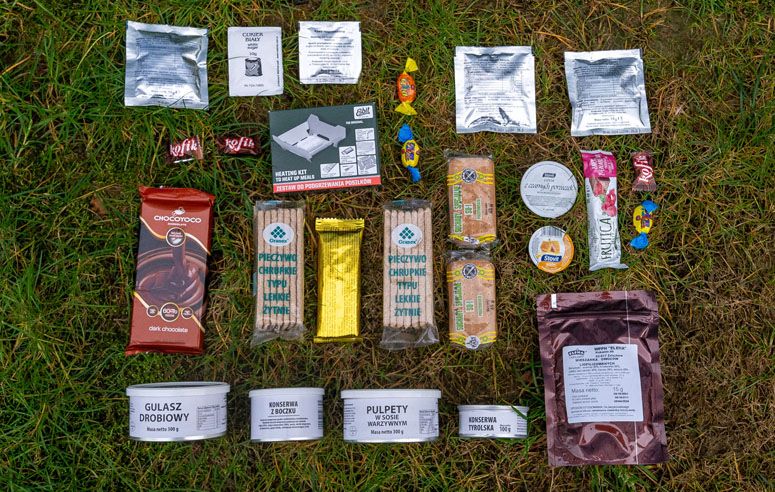
The Polish 24-hour ration pack above consists of breakfast, lunch, dinner and additional snacks. For breakfast, troops get bacon, crispbread and blackcurrant jam. For lunch, there is a main dish, such as chicken goulash stew, crispbread with honey and canned meat, and as an evening meal, troops get meatballs in vegetable sauce and dried fruit. In the additional snacks, Polish soldiers can find fruit and cereal bars, dark chocolate, coffee candy, hot chocolate, coffee or tea.
Portugal
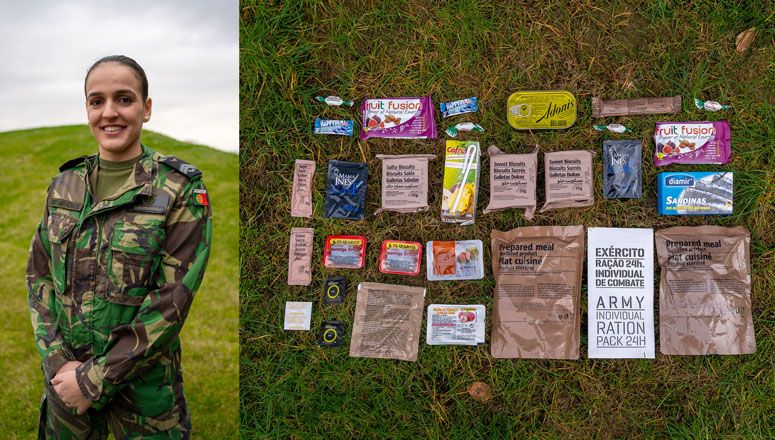
For Portuguese troops, the pictured 24-hour military ration pack includes a breakfast of sweet crackers, fruit jam and instant coffee; a protein-rich lunch of beans with sausage, tuna in oil, and fruit paste; and a dinner of beef with vegetables and sardines in oil. To complement these main dishes, the ration also contains salted crackers, chocolate, fruit juice, candy, a fig and almond energy bar, and an isotonic drink.
Romania
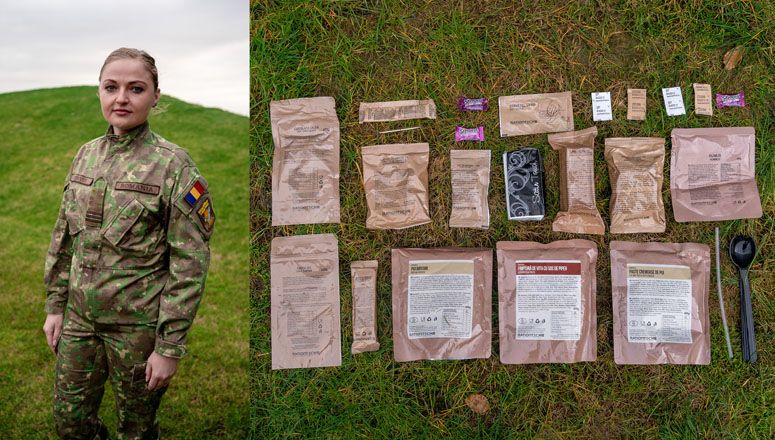
A Romanian combat ration has several variants. The one pictured above is a menu that contains creamy pasta with chicken, pepper steak pasta and biryani chicken as main dishes, alongside other food such as biscuits, nut butter, granola mix, crackers with humus or fruit cubes. To drink, Romanian troops may have coffee, hot chocolate or isotonic drinks.
United Kingdom
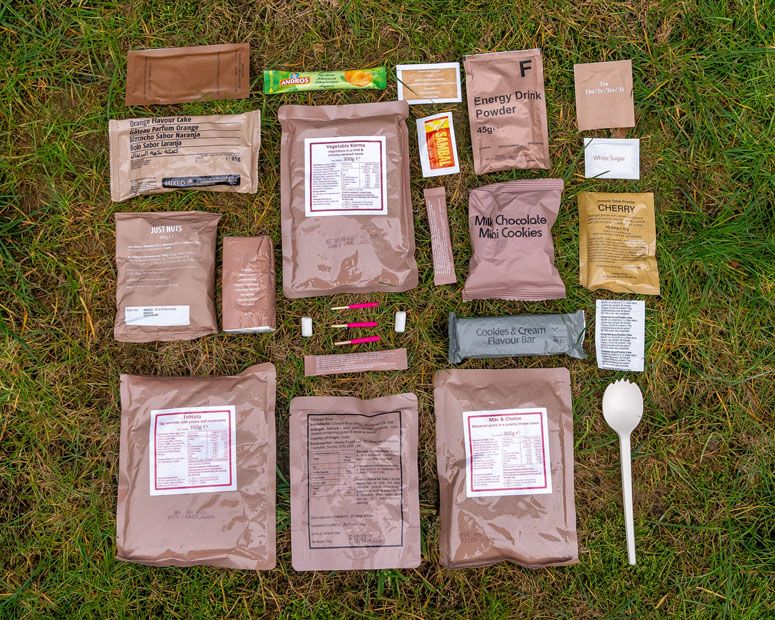
The UK’s 24-hour operational ration pack is available in 10 different menus, including vegetarian, halal, kosher and Sikh/Hindu versions. The vegetarian one pictured above contains mac & cheese, vegetable korma with rice and frittata. The main dishes are supplemented by mini cookies, orange flavour cake, nuts and oat biscuits for quick energy. The MRE also offers several drinks such as tea, hot chocolate or flavoured energy drinks. In the UK, the inclusion of new dishes to the menu entails a rigorous process of testing shelf life, safety and nutrition, as well as a taste test by the Food Tasting Panel, which is made up of representatives from the British Armed Forces who blindly evaluate ration samples and score them on smell, flavour, mouth-feel and overall satisfaction.
Which Ally’s ration kit would you want to try? Watch the video below to find out how soldiers from different NATO countries reacted when they tried each other’s rations!
